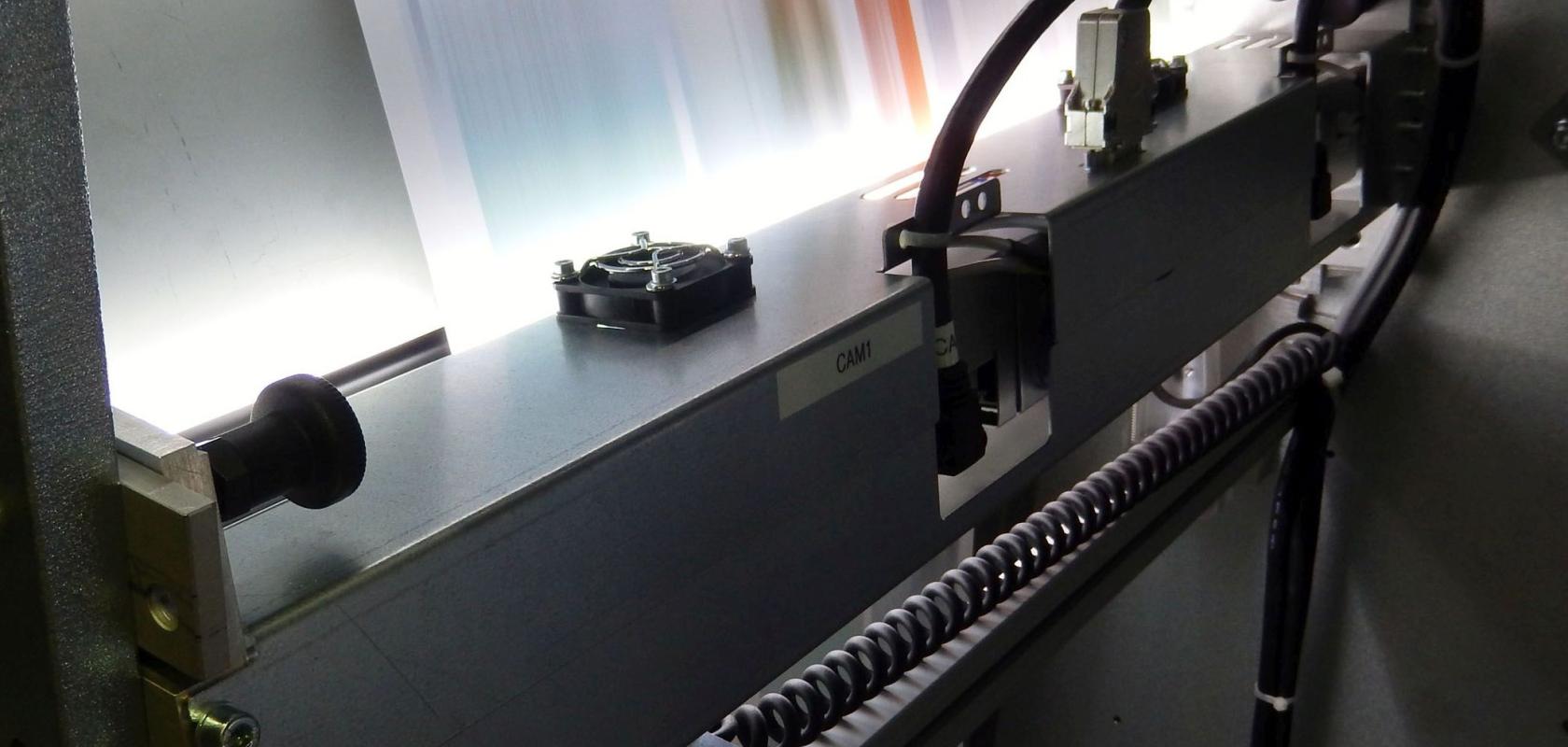The new Mitsubishi Electric CX series of high-speed Contact Image Sensors (CIS) now available from STEMMER IMAGING offer a compact alternative to line scan cameras. The sensors allow high quality distortion-free scanning of surfaces right up to the edges of the material at speeds up to 1000 m per minute. They are especially suitable for applications that require a vertical telecentric detection of all object points on large objects.
Distributed under the name Mitsubishi Electric Line Scan Bar, the new high speed CIS CX models offer a choice resolutions depending on the application. This allows scan speeds of 138 metres per minute at 600 dpi, up to 450 metres per minute at 300 dpi and 1000 metres per minute at 150 dpi to be achieved. The huge data amounts resulting from these high speeds can be transferred via one or two CoaxPress interfaces depending on the sensor length. The previously available CIS AX and MX versions provided CameraLink interfaces.
One of the major benefits of CIS compared with line scan cameras is their compact and easy-to-install format, which was slightly modified in the new CIS generation and adapted to the requirements of the printing industry. They are held in place directly above the surface of interest at a fixed height of 12mm, with all LED illumination and optics built-in. The CIS can be installed in just a few minutes since it is easier to do the adjustment directly above the object.
The new CX models are available in scan widths of 367, 587 and 807 mm. For seamless scanning of larger material widths, several sensors can be arranged next to one another. By being close to the material instead of mounted high above, the CIS also helps to significantly reduce the overall footprint, and therefore the costs and complexity of the machine.
Ease of installation and removal means maintenance and support requirements are also significantly reduced. This benefits not only machine builders but also end users who now no longer need to have specialist engineers on standby and can be assured of minimal downtime in the event of a problem.
Typical application areas for the Contact Image Sensors include the print and thin film production industries, where it can be used to detect surface defects on paper, plastics, fabrics, banknotes and even holograms. In addition, the CIS can also be used for the surface inspection of wood, glass and other materials and can form the heart of an automated optical inspection system for printed circuit board.


